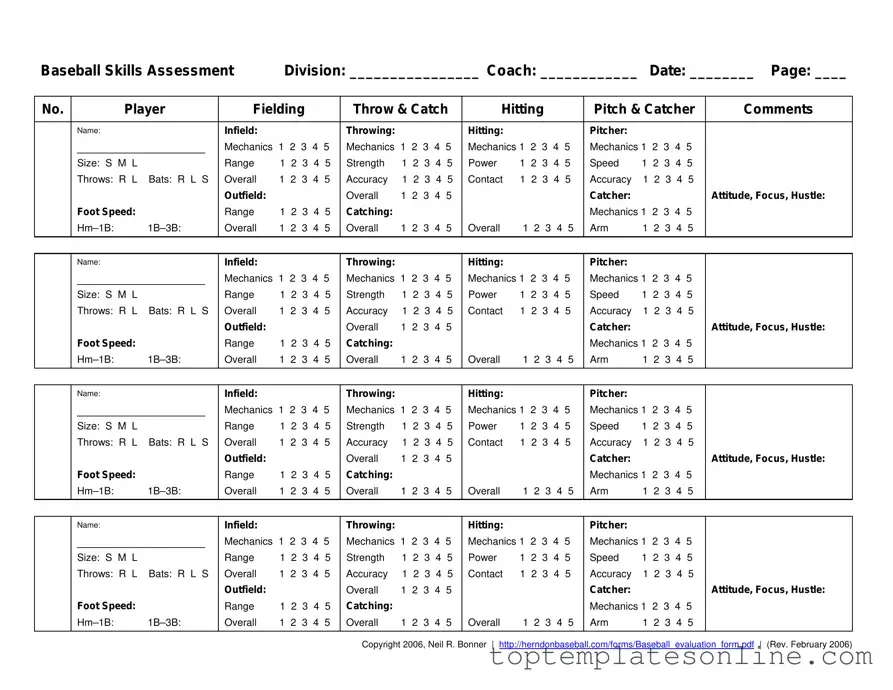When it comes to evaluating young baseball talent, the Baseball Skills Assessment Form serves as a vital tool for coaches and evaluators alike. This structured assessment is designed to provide a comprehensive overview of a player's abilities across multiple skill sets, including fielding, throwing, hitting, and pitching. Each player is scored on a five-point scale, allowing coaches to quantify performance in key areas such as mechanics, accuracy, power, and speed. The form also emphasizes the importance of attitude, focus, and hustle, recognizing that a player's mindset can be just as crucial as their physical skills. With sections dedicated to infield and outfield skills, as well as specific evaluations for pitchers and catchers, the form ensures that every aspect of a player's game is considered. This standardized approach not only aids in the selection of All-Star teams but can also be adapted for use in house leagues, making it a versatile resource for any baseball program. By utilizing this assessment form, coaches can foster a fair and effective evaluation process, ultimately helping to develop the next generation of baseball players.
